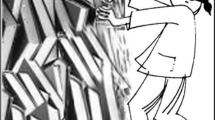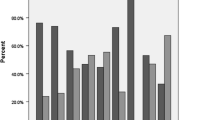Abstract
It is inevitable that the ´publish or perish´ paradigm has implications for the quality of research published because this leads to scientific output being evaluated based on quantity and not preferably on quality. The pressure to continually publish results in the creation of predatory journals acting without quality peer review. Moreover the citation records of papers do not reflect their scientific quality but merely increase the impact of their quantity. The growth of sophisticated ´push -button´ technologies allows for easier preparation of publications while facilitating ready-to-publish data. Articles can thus be compiled merely through combining various measurements, usually without thought to their significance and to what purpose they may serve. Moreover any deep-rooted theory which contravenes mainstream assumptions is not welcomed because it challenges often long-established practice. The driving force for the production of an ever growing number of scientific papers is the need for authors to be recognised in order to be seriously considered when seeking financial support. Funding and fame are distributed to scientists according to their publication and citation scores. While the number of publications is clearly a quantitative criterion, much hope has been placed on citation analysis, which promised to serve as an adequate measure of genuine scientific value, i.e. of the quality of the scientific work.

Similar content being viewed by others
Notes
The Gospel according to St.John 8:12.
The Gospel according to St.Matthew 12:25.
The Book of the prophet Jeremiah 10:23.
References
Adam, D. (2002). Citation analysis: The counting house. Nature, 415, 726–729.
Alves, A. D., Yanasse, H. H., & Soma, N. Y. (2016). An analysis of bibliometric indicators to JCR according to Benford’s law. Scientometrics, 107, 1489–1499.
Bornmann, L., Mutz, R., Hug, S. E., & Daniel, H.-D. (2011). A multilevel meta-analysis of studies reporting correlations between the h-index and 37 different h-index variants. Informetrics, 5, 346–359.
Burnham, J. F. (2006). SCOPUS database: A review. Biomedical Digital Libraries, 3, 1–7.
Cronin, B., & Atkins, H. B. (Eds.). (2000). The web of knowledge, Information Today. New Jersey: Medford.
Editorial. (2003). Deciphering impact factors. Nature Neuroscience, 6, 783.
Editorial. (2008). Papers about papers, Nature Nanotechnology, 3, 633.
Editorial. (2013). Beware the impact factor. Nature Materials, 12, 89–91.
Eghe, L. (2006). Theory and practise of the g-index. Scientometrics, 69, 131–152.
Fiala, J. (1972). Algebraic conception of the powder diffraction identification system. Journal of Physics D: Applied Physics, 5, 1874–1876.
Fiala, J. (1976). Optimization of powder-diffraction identification. Journal of Applied Crystallography, 9, 429–432.
Fiala, J. (1980). Powder diffraction analysis of a three-component sample. Analytical Chemistry, 52, 1300–1304.
Fiala, J. (1982). A new method for powder diffraction phase analysis. Crystal Research and Technology, 17, 643–650.
Fiala, J. (1987). Information flood: fiction and reality. Thermochimica Acta, 110, 11–22.
Fiala, J., & Říha, J. (2014). X-ray diffraction analysis of materials. Hutnické listy, 67, 2–7.
Fiala, J., & Šesták, J. (2000). Databases in material science: Contemporary state and future. J Thermal Anal Calor, 60, 1101–1110.
Frey, B. S., & Rost, K. (2010). Do rankings reflect research quality? Journal of Applied Ecology, 13, 1–38.
Garfield, E. (1955). A new dimension in documentation through association of ideas. Science, 122, 108–111.
Garfield, E. (1979a). Citation indexing. New York: Wiley.
Garfield, E. (1979b). Perspective on citation analysis of scientists, Chapter 10. In E. Garfield (Ed.), Citation indexing. New York: Wiley.
Garfield, E. (1996). What is the primordial reference for the phrase ´Publish or perish´? Scientist, 10, 11–17.
Garfield, E. (1999). Journal impact factor: A brief review. Canadian Medical Association Journal, 161, 979–980.
Goethe, J. W. (1870). Faust a tragedy, translated by Bayard Taylor, part I, scene I. Night. Boston, New York: Houghton Mifflin Company.
Hirsch, J. E. (2005). An index to quantify an individual´s scientific research output. Proceedings of the National Academy of the Science USA, 102, 16569–16572.
Holba, P., & Šesták, J. (2015). Heat inertia and its role in thermal analysis. Journal of Thermal Analysis and Calorimetry, 121, 303–307.
Johnson, A. A., & Davis, R. B. (1975). The research productivity of academic materials scientists. Journal of Metals., 27, 28–29.
Ketcham, C. M. (2007). Predicting impact factor one year in advance. Laboratory Investigation, 87, 520–526.
Kraus, I. (1997). Wilhelm Conrad Röntgen, dědic šťastné náhody (Wilhelm Conrad Röntgen: The heritage of lucky coincidence). Praha: Prometheus.
Kraus, I. (2015). Ženy v dějinách matematiky, fyziky a astronomie (Ladies in the history of mathematics and physics), Česká technika—nakladatelství ČVUT, Praha.
Lehmann, S., Jackson, A. D., & Lautrup, B. E. (2006). Measures for measures. Nature, 444, 1003–1004.
Malinowski, E. R., & Howery, D. G. (1980). Factor analysis in chemistry. New York: Wiley.
Mannchen, W. (1965). Einführung in die Thermodynamik der Mischphasen. Leipzig: VEB Deutscher Verlag für Grundstoffindustrie.
Newton, I. (1701). Scale graduum caloris. Calorum descriptiones & signa. Philosophical Transactions, 22, 824–829.
Qian, Y., Rong, W., Jiang, N., Tang, J., & Xiong, Z. (2017). Citation regression analysis of computer science publications in different ranking categories and subfields. Scientometrics, 108, 1–24. doi:10.1007/s11192-016-2235-4.
Roy, R. (1976). Comments on citation study of materials science departments. Journal of Metals, 28, 29–30.
Scully, C., & Lodge, H. (2005). Impact factors and their significance; overrated or misused? British Dental Journal, 198, 391–393.
Seglen, P. O. (1997). Why the impact factor of journals should not be used for evaluating research. British Medical Journal, 314, 498–502.
Šesták, J. (2012). Citation records and some forgotten anniversaries in the field of thermal analysis. Journal of Thermal Analysis Calorimetry, 108, 511–518.
Wissenschaftliche Selbstbiographie. Mit einem Bildnis und der von Max von Laue gehaltenen Traueransprache. Johann Ambrosius Barth Verlag (Leipzig 1948), p. 22, as translated in Scientific Autobiography and Other Papers, trans. F. Gaynor (New York, 1949), pp. 33–34 (as cited in T. S. Kuhn, The Structure of Scientific Revolutions).
Ylä-Herttuala, S. (2015). From the impact factor to DORA and the scientific content of articles. Molecular Therapy, 23, 609.
Acknowledgement
The present work was supported by Institutional Research Plan of Institute of Physics ASCR,v.v.i., and developed at its Join Research Laboratory with the New Technologies Centre of the University of West Bohemia in Pilzen (the CENTEM project, reg. no. CZ.1.05/2.1.00/03.0088 that is co-funded from the ERDF as a part of the MEYS—Ministry of Education, Youth and Sports OP RDI Program and, in the follow-up sustainability stage supported through the CENTEM PLUS LO 1402). The paper is based on a long lasting earnest letter-friendship of Jaroslav Fiala with Eugene Garfield (Institute for Scientific Information, USA). Kind interest by Wolfgang Glänzel (University of Leuven, Belgium) is appreciated.
Author information
Authors and Affiliations
Corresponding author
Rights and permissions
About this article
Cite this article
Fiala, J., Mareš, J.J. & Šesták, J. Reflections on how to evaluate the professional value of scientific papers and their corresponding citations. Scientometrics 112, 697–709 (2017). https://doi.org/10.1007/s11192-017-2334-x
Received:
Published:
Issue Date:
DOI: https://doi.org/10.1007/s11192-017-2334-x




